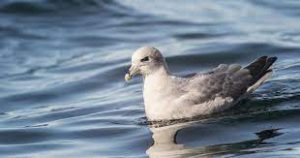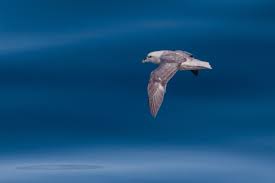The Northern Fulmar, scientifically known as Fulmarus glacialis, is a captivating seabird that navigates the harsh and unforgiving environments of the North Atlantic and Arctic Oceans. With its remarkable adaptations and behaviors, this bird has sparked the interest of ornithologists and nature enthusiasts alike. Join us as we delve into 16 intriguing facts about the Northern Fulmar, shedding light on its unique characteristics and its crucial role within its oceanic domain.

1. Master of Flight: The Northern Fulmar is a skilled flier, known for its effortless gliding over the open sea.
2. Oceangoing Nester: These seabirds prefer nesting on remote cliffs and rocky ledges, often in colonies with thousands of individuals.
3. Salt Gland Adaptation: Northern Fulmars possess specialized salt glands that allow them to excrete excess salt ingested from their marine diet.
4. Albatross Relative: Genetically related to albatrosses, the Northern Fulmar shares some of their distinct characteristics.
5. Scavenging Specialists: Their diet includes krill, fish, and other marine creatures, often scavenging from the water’s surface.
6. Hydrodynamic Features: Their tube-like nostrils help reduce air resistance during flight, enhancing their aerodynamics.
7. Pelagic Navigators: Northern Fulmars are highly adapted to a pelagic lifestyle, spending most of their lives on the open ocean.
8. Colonies of Coexistence: Despite their large nesting colonies, these birds have evolved ways to minimize aggression among themselves.
9. Aerial Defense Mechanisms: When threatened by predators, Northern Fulmars are known to release foul-smelling stomach oil as a deterrent.
10. Long-Distance Migrations: They cover vast distances during seasonal migrations, sometimes traveling thousands of miles.
11. Climate Change Sentinels: Studying Northern Fulmars provides insights into the effects of climate change on marine ecosystems.
12. Coping with Harsh Environments: Their thick plumage and insulating fat reserves help them withstand cold temperatures and rough seas.
13. Consequences of Plastic Pollution: The Northern Fulmar’s stomach contents often reveal the presence of plastic debris, highlighting ocean pollution.
14. Parental Care: Both parents take turns incubating the single egg and feeding the chick once it hatches.
15. Seabird Sanctuaries: Protecting their nesting sites is crucial for the conservation of the Northern Fulmar and other seabirds.
16. Oceanic Wanderers: Northern Fulmars are known to follow ships, a behavior that has earned them the nickname “fulmar friends.”
Conclusion
The Northern Fulmar, with its remarkable adaptations for a life at sea, offers a captivating glimpse into the intricate world of oceanic survival. As we explore these 16 intriguing insights, we gain a deeper appreciation for the role these birds play in maintaining the delicate balance of their marine habitats.



















Add Comment